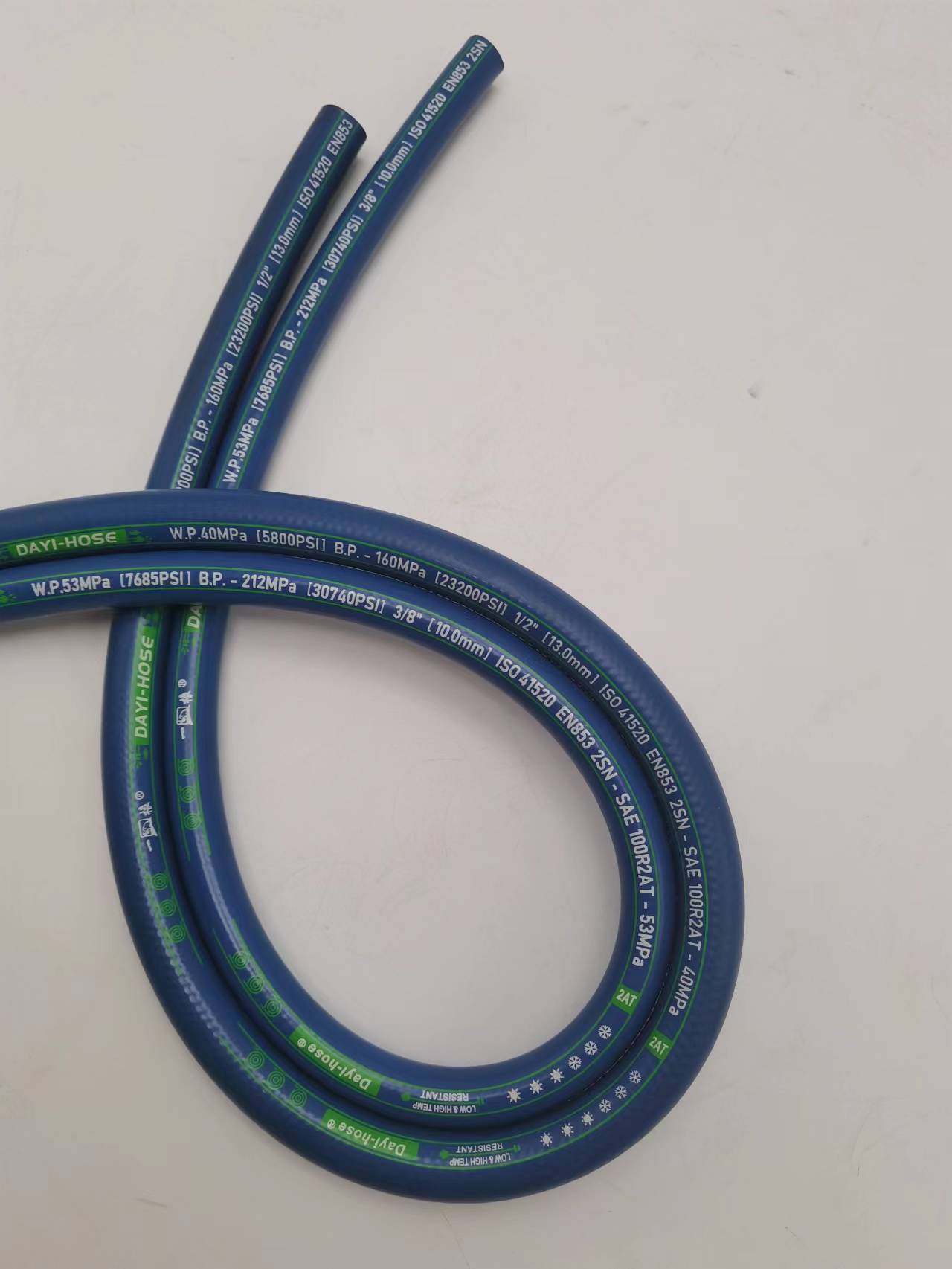335345435
Jul . 28, 2024 13:21 Back to list
Top Manufacturers Specializing in Single Fiber Braid Hydraulic Hoses for Optimal Durability and Performance
Understanding Single Fiber Braid Hydraulic Hose Manufacturers
Hydraulic hoses play a vital role in numerous industrial applications, facilitating the effective transfer of fluid under high pressure while ensuring safety and efficiency. Among the various types of hydraulic hoses available in the market, single fiber braid hydraulic hoses have carved out a significant niche due to their unique characteristics and advantages. As industries evolve, the demand for high-quality hydraulic hoses continues to grow, leading to the emergence of specialized manufacturers focusing on single fiber braid technology.
What is a Single Fiber Braid Hydraulic Hose?
A single fiber braid hydraulic hose is constructed with a reinforced fiber woven around a rubber or thermoplastic core, enhancing its strength and flexibility. The term single fiber braid refers to the method of reinforcement, where a single layer of fibrous material is braided to provide a combination of durability and lightweight properties. This construction allows the hose to withstand high pressures and is particularly suited for applications involving fluid transfer in hydraulic systems, heavy machinery, and other demanding environments.
Advantages of Single Fiber Braid Hydraulic Hoses
1. Lightweight and Flexible One of the most significant advantages of single fiber braid hoses is their lightweight construction. This feature makes them easier to handle, maneuver, and install, especially in confined spaces. Flexibility also means reduced wear and tear during operation, contributing to a longer service life.
2. High Pressure Resistance Single fiber braid hoses are designed to endure high pressure, making them ideal for hydraulic systems where pressure fluctuations can occur. The robust design ensures minimal risk of rupture, effectively safeguarding equipment and personnel.
3. Chemical Resistance Many single fiber braid hydraulic hoses are resistant to various fluids and chemicals, which is important for ensuring the integrity of the hose in diverse operational environments. This resistance helps prevent degradation, extending the lifespan of the product.
4. Cost-Effective Typically, single fiber braid hoses are more cost-effective when compared to multi-layered options. Their manufacturing process is less complex, which can translate into lower production costs. They provide a balance between performance and affordability, making them an attractive choice for many businesses.
single fiber braid hydraulic hose manufacturers

Choosing the Right Manufacturer
When selecting a single fiber braid hydraulic hose manufacturer, several factors should be considered to ensure quality and reliability
1. Reputation and Experience Look for manufacturers with a solid reputation and extensive experience in the industry. Established companies are more likely to adhere to quality standards and regulatory compliance.
2. Quality Control Measures The manufacturing process should include stringent quality control measures to guarantee that the hoses meet safety and performance specifications. Inquire about certification and testing processes.
3. Customization Options Different industries have varying requirements; hence, it's advantageous to partner with a manufacturer that offers customization options. Whether it's specific lengths, diameters, or material compositions, flexibility can ensure that the hoses meet unique operational needs.
4. Customer Support and After-Sales Service A reliable manufacturer should provide excellent customer support, including technical assistance, availability of replacement parts, and warranty terms. After-sales service can significantly impact the overall product experience and satisfaction.
Conclusion
The market for single fiber braid hydraulic hoses is witnessing robust growth, driven by the increasing demand for durable and efficient fluid transfer solutions. Choosing the right manufacturer is crucial in ensuring the quality and reliability of these important industrial components. As industries continue to advance, the importance of high-quality hydraulic hoses will remain paramount, paving the way for innovations in design and materials that enhance operational efficiency and safety.
-
SAE 100 R17 Black Smooth Cover Hydraulic Hose
NewsMar.07,2025
-
SAE 100 R17 Black Smooth Cover Hydraulic Hose
NewsMar.07,2025
-
SAE 100 R17 Black Smooth Cover Hydraulic Hose
NewsMar.07,2025
-
SAE 100 R17 Black Smooth Cover Hydraulic Hose
NewsMar.07,2025
-
SAE 100 R17 Black Smooth Cover Hydraulic Hose
NewsMar.07,2025
-
steel wire braided hydraulic hose
NewsMar.07,2025



